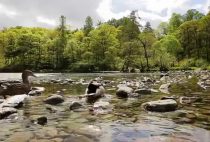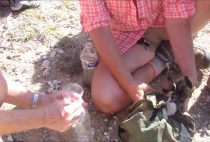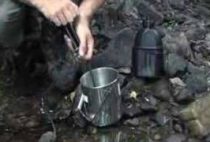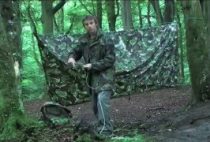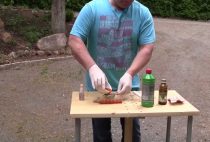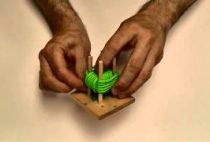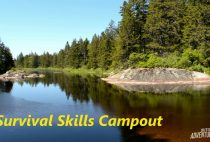Operation Self Sustainability – Wilderness Survival Tips – How to find water & food!
Please share this video with anyone involved in humanitarian projects! Www.bridging-humanity.org teaches others how to create useful things made from trash so they can become self-sufficient. In this video we offer tips so you can survive in the wild. The most important thing you need to survive is water & food. So conserve your body water by not over exerting yourself & stay in the shade. If you have water, drink it sparingly throughout the day. Be careful to ration yourself. If you have food, try not to eat foods that will make you thirsty like dry foods. Eat small portions of food throughout the day. In reality you can survive on very little food. Remember, the larger portions of food you eat, the more water your body will require to process the food. Try to find a water source & be on the look-out for natural elements to cache water. Palm tree pods, pumpkin gourds, dried avocado shells & coconut shells are natural containers. Look for patches of green where little else is green. This usually is a sign of an underwater source. Dig a hole about 2 feet deep near the damp soil & wait for water to fill up. You can also do this near the shorelines but be careful & try to find a source that is not high in salt content. If the water tastes salty, don’t drink it, go further inland & away from the shoreline & dig another hole. Listen for the sound of rustling water & look for plants that like water (ie cattails). FYI cattail stalks are a good source of food. The fuzzy part of the cattail can be used for tinder & starting fires. If you find a creek or pond you will need to filter & purify the water. See the following video on how to create a natural water purifier . Water from a pond will need to be boiled for 3 minutes. You can use a coconut shell without the husk or a dried out avocado shell to boil water & as long as it has water in it, the container will not burn. You can place a piece of cloth over your makeshift pot so the evaporated water will soak into the cloth. Then you can squeeze the water into your mouth. Evaporated water is purified. You can also make a natural straw filter. For this you can use bamboo or papaya stalks & insert a small piece of fabric or cotton inside of the straw. Following is a link for making a solar water still . When foraging for food, these are the plants you want to AVOID. In general avoid plants with thorns or spines. The exception to this rule is thistle plant, the fruit of the prickly pear cacti & bouganvila petals. Avoid plants with shiny leaves, flowers with umbrella shaped petals & bells that hang downward. Avoid plants with milky sap with the exception of papaya. If you find a green papaya you will need to cut lines down the sides of it to release the sap. Put unripened papaya, pineapple or avocados in a dark place to speed up the maturing process. Don’t eat fruit that has fallen from the tree from being over ripe as they will most likely be infested with worms or insects. Keep in mind is that there are over 2000 varieties of edible flowers. There are herb flowers, fruit flowers, vegetable flowers, ground & grass covering flowers & flower flowers! See this link for helpful tips on edible flowers . A good rule of thumb is to remember that the leaves from trees & plants that are fruit bearing are also edible. For instance the leaves of papaya, mango, avocado, banana, fig, grapes are all edible as long as you pick young leaves & boil them. Pig weed, clovers, dandelions, romerillo, comelina day flower are all weeds that are edible & have medicinal properties. Dates, berries, grains & nuts are considered the food of the gods. Stay safe & stay tuned for more videos from Bridging Humanity!



